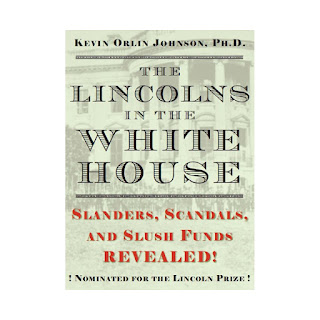The Lincolns’ horses produced an endless supply of manure, but “there’d also be a cow or two, and chickens for the table.” Woodrow Wilson’s flock of sheep is remembered as part of his wartime economy drive, but he’d had them there since before we entered World War I, and he wasn’t the first to keep sheep at the White House anyway. In fact, the sweeping lawns of the Executive Mansion were usually planted to hay and clover to feed the livestock.
That’s where the manure comes in. Like gardeners today, Johnson says, “the groundskeepers didn’t think of it as waste but as fertilizer.” On the open market in Washington, a cartload of manure could fetch as much as $16.00, nearly $500.00 in today’s money, about what you’d have to pay for it today.
The story may have been in circulation at the time. Maunsell Field of New York said that he’d heard “from a Senator, who was appointed chairman of an investigating committee upon the subject at a secret session of the Senate, that a state dinner was paid for out of an appropriation for fertilizers for the grounds connected with the Executive Mansion.” But notice that Field, one of Lincoln’s high officials in the Treasury, had no direct knowledge of such a transaction. “And he didn’t mention this story until 1875,” Johnson says.
As you see, Field’s note takes the money out of the manure heap into direct federal appropriations and escalates the transaction from ice cream to a whole state dinner: but even then it only confirms that the money went to a public purpose. “In fact, that would’ve been a perfectly normal cash flow at the White House then,” Johnson says. “It still is.”
So, as far as Glenn's statement means anything at all it just indicates that after Mary Todd Lincoln set things to rights the money derived from the White House's livestock went to pay expenses at the White House, which is where it was supposed to go.
Evidently previous incumbents didn’t notice or didn’t care, but Mary Lincoln was an excellent manager, and nobody’s fool. She inspected the White House from top to bottom, the first First Lady to set foot in the kitchens in decades, and busied herself setting the whole place to rights. “She was ridiculed for rolling up her little sleeves and showing the staff how to cook and clean,” Johnson says, “but somebody should have done that before the people were hired.” Taking on the groundskeepers’ embezzlement was just part of her program.
But what about the ice cream? “Well,” Johnson says, “what do you think the cows were for?”
The Lincolns in the White House is available for pre-order exclusively at Pangaeus.com.
Kevin Orlin Johnson
Pangaeus Press
email us here
Visit us on social media:
Facebook









No comments:
Post a Comment